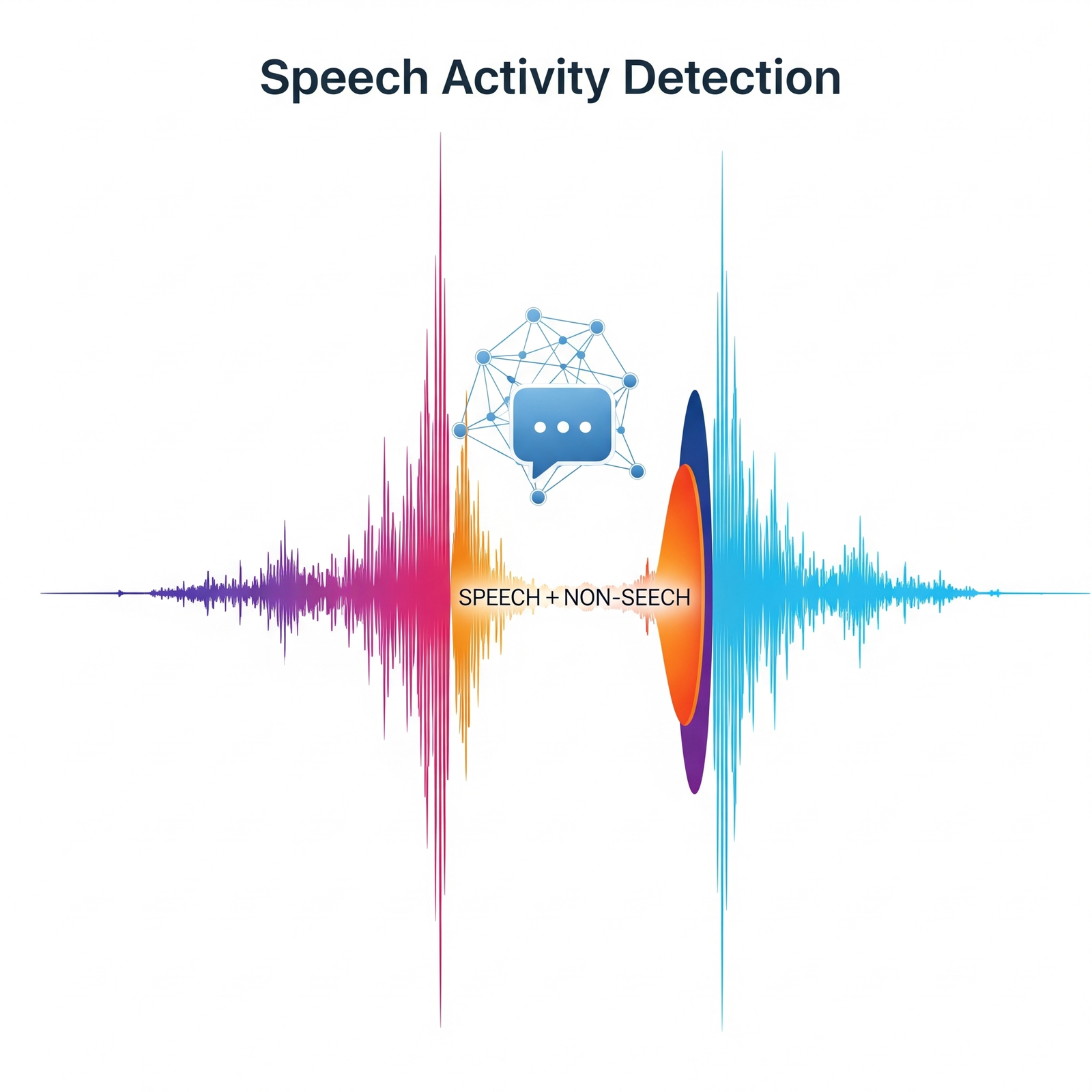The Silent Revolution: Precisely Pinpointing Speech in Audio
In our increasingly voice-driven world, from virtual assistants to smart home devices and automated call centers, understanding when someone is actually speaking is paramount. This seemingly simple task is the domain of Speech Activity Detection (SAD) – the crucial ability to accurately differentiate between speech and non-speech segments within an audio stream. Getting this right means more efficient systems, better user experiences, and significant savings in processing power.
Building an Intelligent Ear: Our SAD System’s Evolution
At its core, a SAD system needs an “intelligent ear” trained to recognize the subtle nuances of human speech amidst background noise, silence, or other audio events. Our journey began with training a Neural Network (NN) to tackle this fundamental challenge. Neural Networks, with their remarkable pattern recognition capabilities, proved a strong starting point for this differentiation task.
However, recognizing speech isn’t just about static patterns; it’s about temporal sequences – how sounds evolve over time. To capture this deeper context, we progressed to employ a more sophisticated LSTM-based ResNet system. The integration of Long Short-Term Memory (LSTM) networks, known for their ability to process sequences, with Residual Networks (ResNet), excellent for handling deeper architectures, allowed our system to learn more complex temporal dependencies and robust features from the audio.
Cutting Through the Noise: Impressive Performance Achieved
The results speak for themselves. Through rigorous training and refinement, our LSTM-based ResNet system achieved a remarkable DCF (Detection Cost Function) of just 3.3% on the validation dataset of FS-02. This low DCF signifies a highly effective system that makes very few costly errors in mistaking speech for non-speech, or vice-versa, which is critical for real-world applications.
Beyond the core architecture, we delved into the intricacies of the data pre-processing pipeline. By systematically varying how the audio data was prepared and fed into the models, we were able to compare the overall performance across different setups and analyze how various pre-processing techniques impacted the associated evaluation metrics. This meticulous exploration allowed us to fine-tune our approach for optimal results.
The Future of Voice Interface
Achieving such low error rates in Speech Activity Detection is a testament to the power of advanced deep learning architectures and careful data engineering. Systems like ours are fundamental building blocks for sophisticated voice interfaces, enabling devices to listen smarter, process more efficiently, and interact with users more naturally. The ability to precisely identify when and where speech occurs is not just an engineering feat, but a key to unlocking the next generation of intelligent audio applications.
